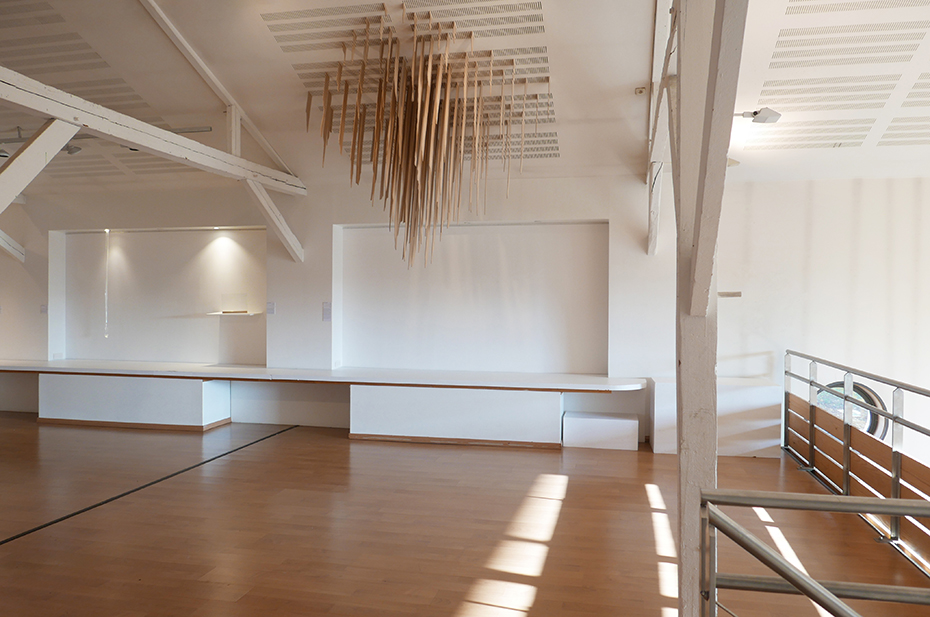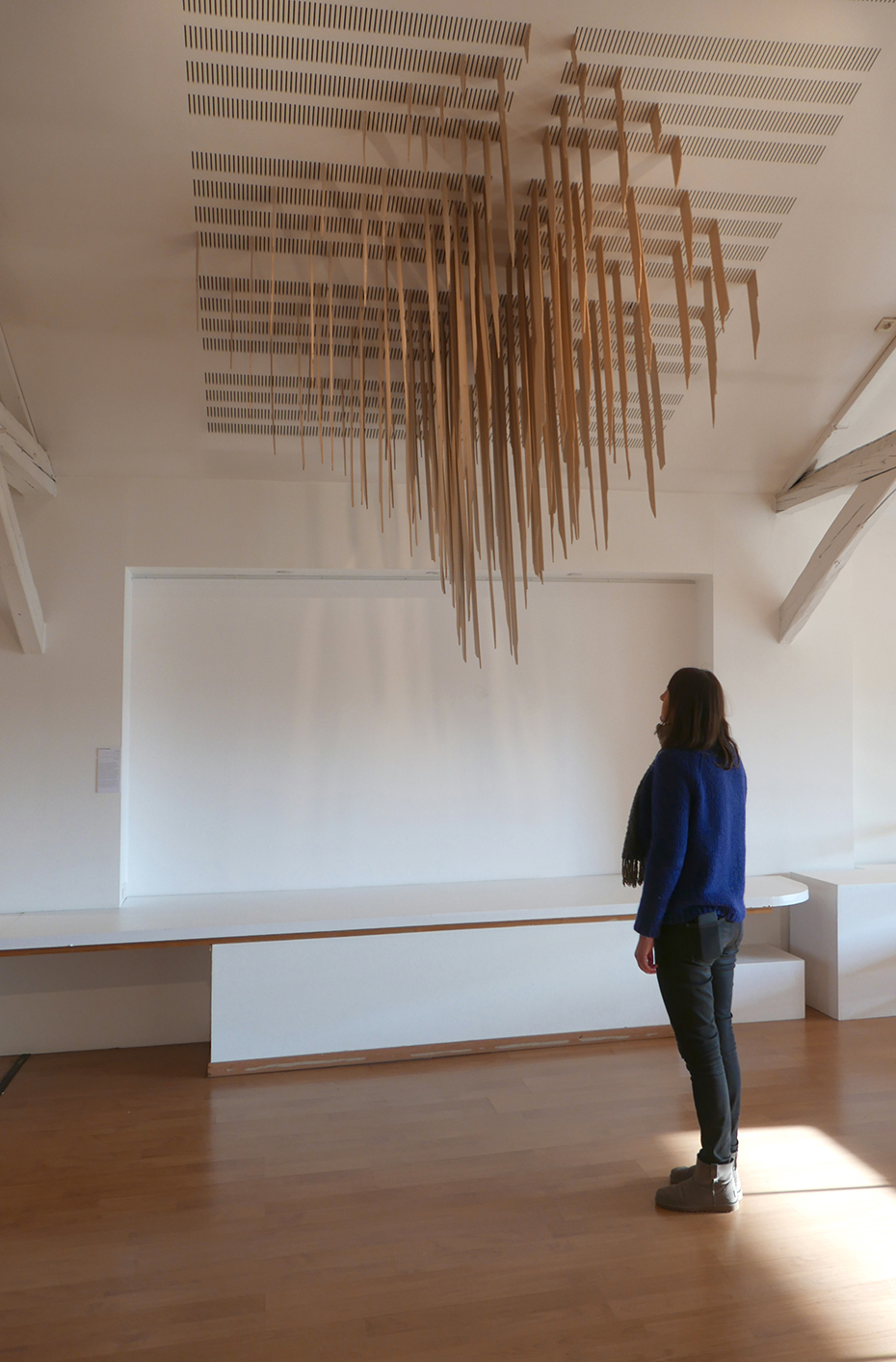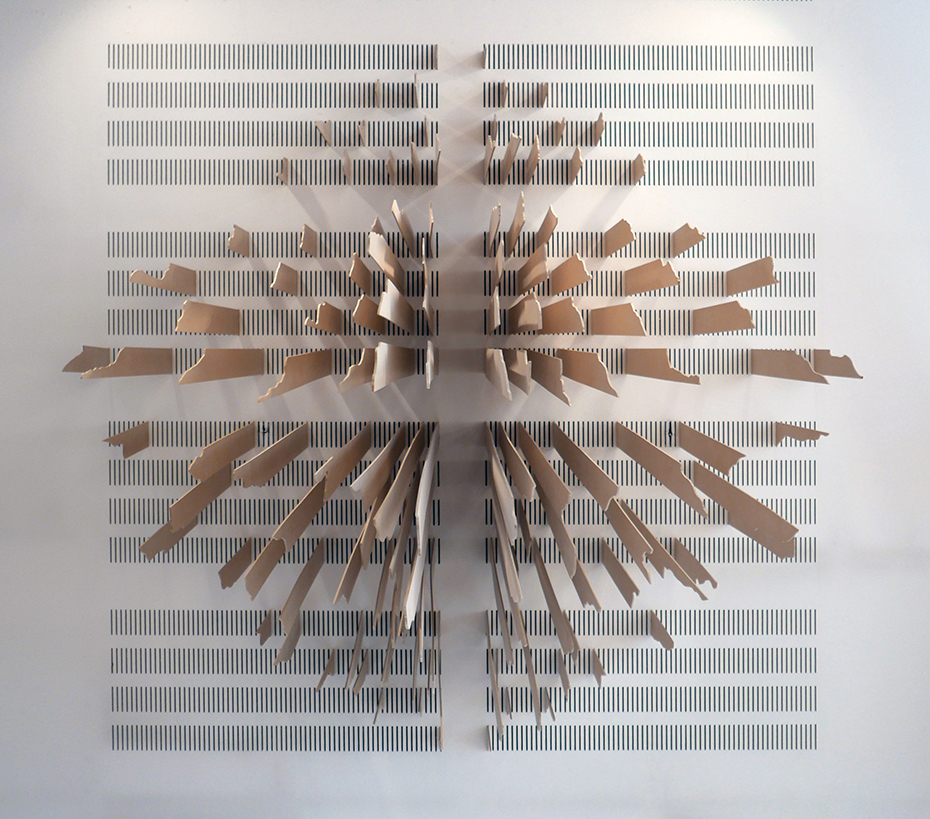Production Rosa bonheur
Le plafond est hachuré de fissures à intervalle régulier, semblables à des centaines de code barre, de codes à déchiffrer, évoquant une partition pour piano mécanique.
Derrière ces interstices, que se cache t-il, une forme à venir? Faire transpirer le lieu, un ruissèlement, un phénomène climatique, la partie immergée de l’iceberg?
Celle qui nous fait voir ce basculement des mondes.
Jeu cinétique avec la forme constituée d’une forêt d’environ 150 lattes en bois, selon le point de vue, la forme apparait incisive, sculpturale, agressive, sonore.
Face à l’installation, les tranches apparaissent comme des lames, pointues, de coté les courbes découpées apparaissent dans la largeur des lattes, suggèrent un relief, un paysage. Additionnées, ces strates peuvent évoquer la structure d’un essaim d’abeille, d’un nid ou encore d’un iceberg, une transpiration du plafond, une pluie de météorites qui transperce l’espace.
NB: le terme stigmergie fut introduit par le biologiste français Pierre-Paul Grassé en 1959, en référence au comportement des termites. Il le définit comme une « stimulation des travailleur·euses par l’œuvre qu’ils réalisent ». Le terme provient des mots grecs στιγμα (stigma) « marque, signe » et εργον (ergon) « travail, action », exprimant la notion que les actions d’un·e agent·e laissent des signes dans l’environnement, signes perçus par lui ou elle-même et les autres agent·es et qui déterminent leurs prochaines actions.
Rosa bonheur production
The ceiling is hatched with cracks at regular intervals, similar to hundreds of barcodes, codes to be deciphered, reminiscent of a score for a player piano.
What is hidden behind these cracks, a form to come?
To make the place perspire, a gush, a climatic phenomenon, the submerged part of the iceberg?
The one that makes us see this tilting of the worlds.
A kinetic game with the shape made up of a forest of about 150 wooden slats, depending on the point of view, the shape appears incisive, sculptural, aggressive, sonorous.
In front of the installation, the slices appear as blades, pointed, from the side the curves cut out appear in the width of the slats, suggesting a relief, a landscape. When added together, these strata can evoke the structure of a swarm of bees, a nest, or an iceberg, a perspiration from the ceiling, a meteor shower that pierces the space.
NB: the term stigmergy was introduced by the French biologist Pierre-Paul Grassé in 1959, in reference to the behaviour of termites. He defined it as a « stimulation of workers by the work they do ». The term comes from the Greek words στιγμα (stigma) « mark, sign » and εργον (ergon) « work, action », expressing the notion that an agent’s actions leave signs in the environment, signs perceived by himself and other agents and that determine their next actions.



